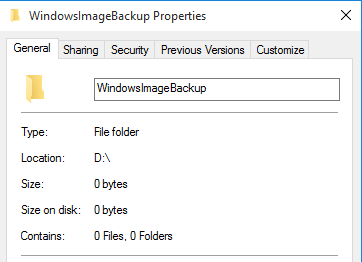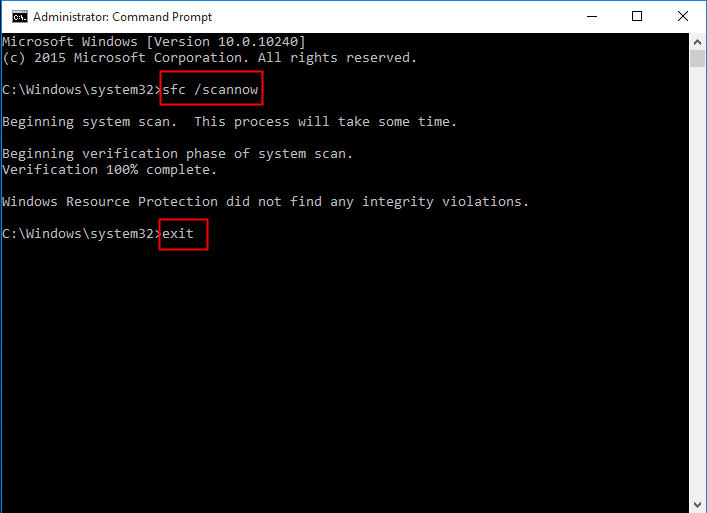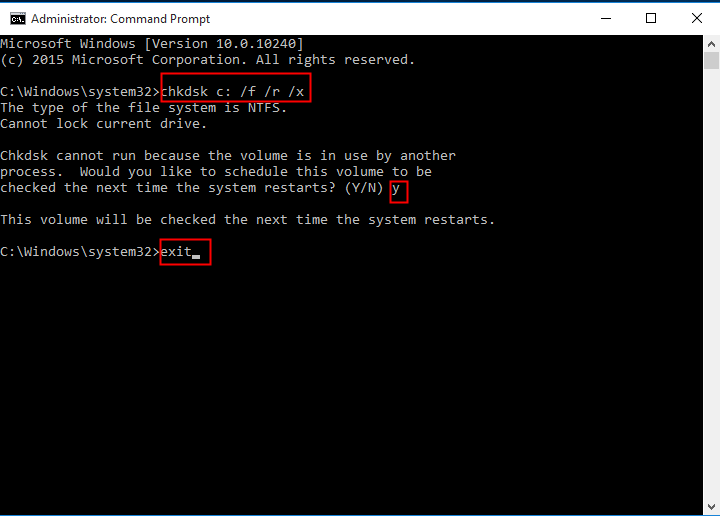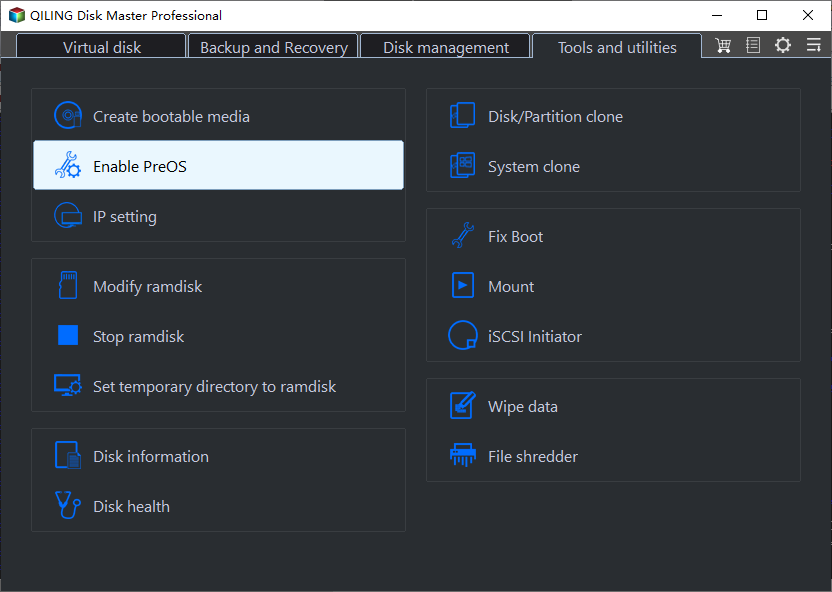Windows 10 Backup 0 Bytes? Get Clear Ideas Here!
Quick Navigation:
- Windows 10 backup shows 0 bytes
- How to fix Windows 10 backup 0 bytes effectively
- How to backup Windows 10 and ensure data integrity
- Summary
Windows 10 backup shows 0 bytes
It's been several years since Microsoft released Windows 10, and with ongoing optimization efforts, the operating system has become more efficient. As a result, many computer users are switching from their old operating system and upgrading to Windows 10.
Developing a habit of making backups is crucial to prevent data loss during daily computer usage. Windows 10 provides built-in backup and restore tools, including Backup and Restore (Windows 7) and File History, but some users encounter issues where Windows Image Backup shows 0 bytes or File History displays a 0-byte backup size.
This problem is mainly caused by two possible reasons, namely incomplete system files and bad sectors. You can easily resolve this problem with 2 effective ways, or use another backup software to protect your system or data with more helpful features.
How to fix Windows 10 backup 0 bytes effectively
"Windows Image Backup and File History are two backup features built into Windows that allow you to create backups of your system and files. However, sometimes these features may not work correctly, and you may see a message indicating that the backup is 0 bytes. If you are experiencing this issue, try the following solutions to resolve the problem.
Repair Windows 10 backup 0 bytes with system file checker
To fix incomplete system files causing your problem, you can try the following steps: Run the System File Checker (SFC) tool, which scans and replaces corrupted system files with a cached copy from the Component Store. Alternatively, you can use the DISM (Deployment Image Servicing and Management) tool to scan and repair corrupted system files.
1. To open the Command Prompt as an administrator, press the Windows Key + X on your keyboard, and select Command Prompt (Admin) from the menu.
2. Run the command `sfc /scannow` (note the space between "sfc" and "/") to initiate a system file check and repair any corrupted system files. Press Enter to execute the command.
3. Type exit and press Enter to exit Command Prompt.
Note:
When the scanning process is finished, you may get following messages:
• Windows Resource Protection found corrupt files and repaired them.
• Windows Resource Protection did not find any integrity violations.
In Windows 10, if you receive message 1, the size of backup 0 bytes can be found. However, if you receive message 2, check the second cause for the solution.
Repair Windows 10 backup shows 0 bytes with chkdsk
If there are bad sectors on the system disk, it can cause Windows 10 to improperly back up data to the target location. To fix this issue, follow the steps below.
1. To open the Command Prompt as an administrator, press the Windows Key + X on your keyboard, and select Command Prompt (Admin) from the menu.
2. To run the Check Disk utility on the C: drive, type `chkdsk c: /f /r /x` (note the space before each slash) and press Enter.
3. For the target drive, which is a boot disk, the system will prompt you to run the command before the next boot. Simply type y and press Enter.
4. Type exit and press Enter to exit Command Prompt.
5. The computer will automatically run the chkdsk command before loading the operating system, which will check the integrity of the hard drive and fix any errors that it finds.
Notes:
The parameters "/f", "/r", and "/x" in the command "chkdsk" tell the program to fix errors, locate and recover bad sectors, and force the drive to dismount before scanning, respectively.
Not all bad sectors can be recovered with "/r", so it's necessary for you to build schedule backups.
How to backup Windows 10 and ensure data integrity
Qiling Disk Master Professional is a complete, reliable, and fast backup software for Windows 11/10/8/7 that helps you backup Windows and ensures data integrity. It offers System, Disk, Partition, and File Backup options to meet different needs, and allows you to check backup integrity on completion to ensure your backup is valid.
★ The software offers a "Schedule Backup" feature, allowing users to automate Windows 10 backups and prevent data loss due to forgotten backups.
★ This system only backs up files that have been changed since the last backup, which helps save time and disk space by not duplicating unchanged files.
★ You can backup Windows 10 to various destinations, including NAS, USB drive, external hard drive, and CD/DVD.
To backup your Windows 10 OS, download and install the free trial of Qiling Disk Master Professional (or Qiling Disk Master Server for server users).
The free trial version has a 30-day time limit. To ensure continuous system and data protection, it's recommended to upgrade to the pro trial version.
Step 1. Connect your external storage to your computer if you want to backup Windows 10 to an external drive.
Step 2. Launch Qiling Disk Master, click on "Backup", and select "System Backup".
Step 3. The system partition(s) is (are) chosen by default, and you need to select the destination path to store the backup image.
Step 4. Confirm the operation and click "Proceed" to backup Windows 10 immediately.
♬ Useful settings:
>> Options: To customize your backup settings, you can enable email notifications for when backups are completed, as well as encrypt or compress your backups for added security and convenience.
>> Schedule Backup: You can set up automatic backups based on various modes, including daily, weekly, and monthly schedules, as well as event triggers, allowing you to customize the backup process to suit your needs. Additionally, backups can also be initiated when a USB device is plugged in.
>> Backup Scheme: This backup tool will automatically backup only changed files with incremental backup by default, allowing for efficient storage of updated data. Additionally, you can choose to use full or differential backup options, providing flexibility in your backup strategy. Furthermore, it can automatically delete old image files, freeing up disk space and keeping your storage organized.
Step 5. When the system backup is in progress, click the settings icon in the bottom left and check "Check backup integrity on completion" to ensure the system backup image is valid for restore. You can also choose to shut down, restart, hibernate, or sleep the PC upon completion.
💜 Backup/Restore OS without loading Windows
To backup or restore Windows 10 without booting into Windows, you can either create a bootable USB or create a recovery environment directly on the current computer, which adds a boot menu without needing any external device.
💜 Easier way to create backups for protection
You can use Qiling Disk Master to backup your system and it's easier, and it supports saving the system image on a custom recovery partition, allowing for quick system restoration from boot using a specific key, even if your computer is not working.
Summary
If Windows 10 backup shows 0 bytes, you can fix incomplete system files and bad sectors to resolve the issue. Alternatively, you can use Qiling Disk Master Professional as a solution. This software not only offers backup and restore features but also allows you to perform disk clone and system clone operations. You can try it now to see its capabilities.
Related Articles
- Quick Fixes for Windows 10 Backup Failed Error
You will learn how to fix Windows 10 backup failed easily, either directly fixing it or using other powerful backup software. - How to Validate a Windows 10 System Backup Image?
You will learn how to validate a windows 10 system backup image during the backup process or after it's complete. Then, you can revive Windows 10 from system image recovery successfully. - The Request Could Not be Performed Because of an I/O Device Error, What to Do?
Solutions to fix the error: The request could not be performed because of an I/O device error (0x8007045D), received while backing up to a new hard disk drive (HDD). - Repair Windows 11 with Command Prompt (SFC, DISM, etc)
Find your Windows 11 works improperly and want to fix it using Command Prompt? Read this article carefully to get a complete guide.







